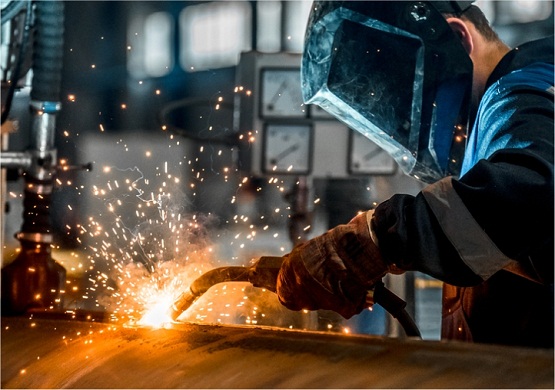Also known as FCAW,Flux Cored Arc Weldingis a flexible welding process suitable for all position welding, given the correct filler material and flux composition. Being highly productive due to the high deposition rates, it provides high quality welds with a good appearance. FCAW requires a continuously-fed consumable tubular electrode containing a flux and a constant-voltage or, less commonly, a constant-current welding power supply. An externally supplied shielding gas is sometimes used, but often the flux itself is relied upon to generate the necessary protection from the atmosphere, producing both gaseous protection and liquid slag protecting the weld. The process is widely used in construction because of its high welding speed and portability.
Flux Cored Arc Welding

How Does Flux Core Arc Welding Work?
Flux cored arc welding uses heat generated by an electric arc to fuse base metal in the weld joint area. This arc is struck between the metallic workpiece and the continuously-fed tubular cored consumable filler wire, with both the wire and the metallic workpiece melting together to form a weld joint. This is similar to MAG welding, except that FCAW welding uses a hollow, tubular electrode filled with flux rather than a solid metal electrode.
The FCAW process can be divided into two types depending on the shielding method; one that uses an external shielding gas and one that solely relies on the flux core itself for protecting the weld area.
The shielding gas, where used, protects the weld pool from oxidation and is usually provided externally from a high-pressure gas cylinder. Weld metal is also shielded by the slag formation from flux melting. Thus the process informally known as ‘dual shield’ welding and was primarily developed for the welding of structural steels.
Advantages
- FCAW may be an "all-position" process with the right filler metals (the consumable electrode)
- No shielding gas needed with some wires making it suitable for outdoor welding and/or windy conditions
- A high-deposition rate process (speed at which the filler metal is applied) in the 1G/1F/2F
- Some "high-speed" (e.g., automotive) applications
- As compared to SMAW and GTAW, there is less skill required for operators.
- Less precleaning of metal required
- Metallurgical benefits from the flux such as the weld metal being protected initially from external factors until the slag is chipped away
- Porosity chances very low
- Less equipment required, easier to move around (no gas bottle)
